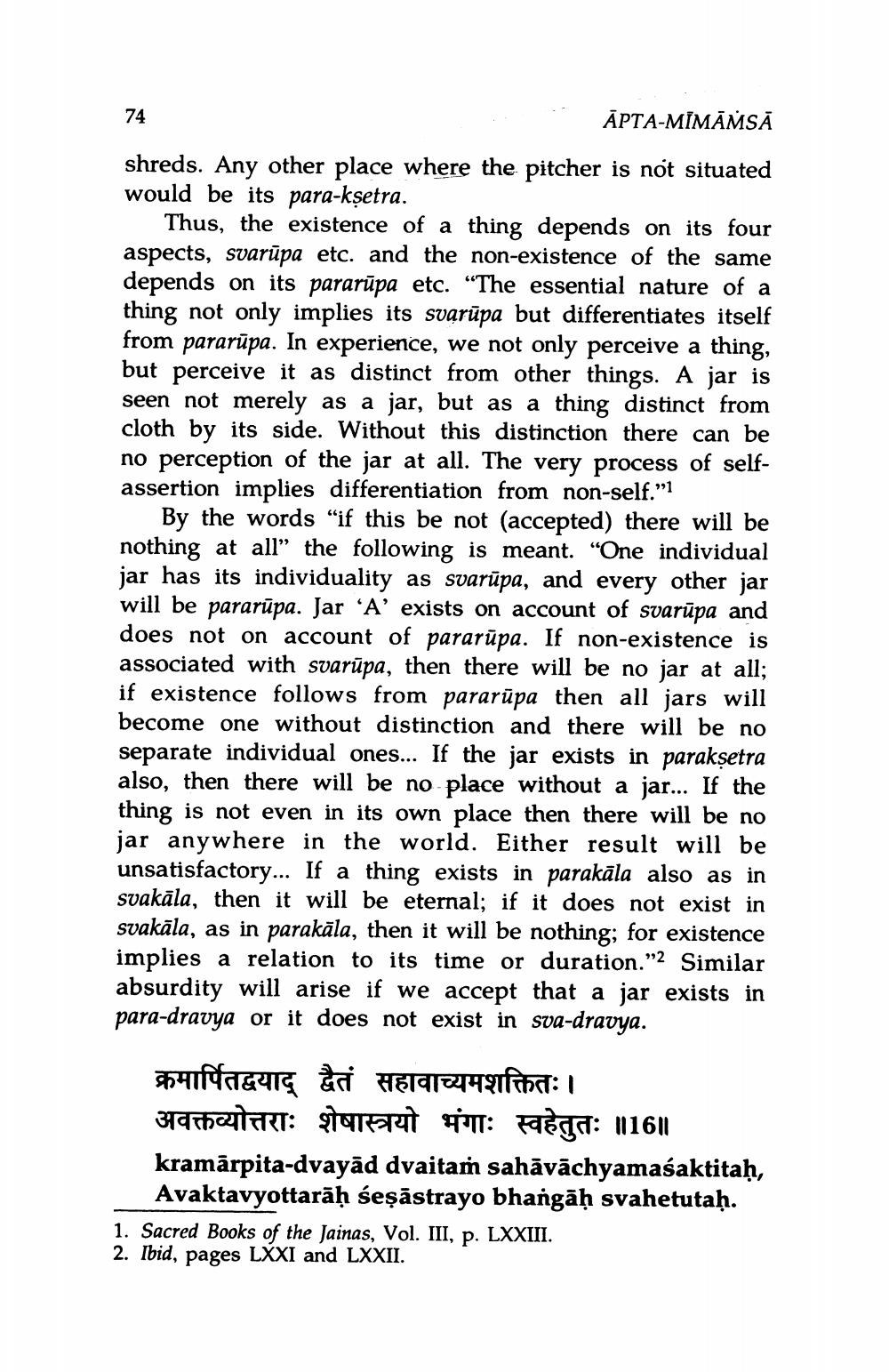________________
ĀPTA-MĪMĀMSĀ
shreds. Any other place where the pitcher is not situated would be its para-kṣetra.
Thus, the existence of a thing depends on its four aspects, svarūpa etc. and the non-existence of the same depends on its pararūpa etc. "The essential nature of a thing not only implies its svarupa but differentiates itself from pararupa. In experience, we not only perceive a thing, but perceive it as distinct from other things. A jar is seen not merely as a jar, but as a thing distinct from cloth by its side. Without this distinction there can be no perception of the jar at all. The very process of selfassertion implies differentiation from non-self."1
By the words "if this be not (accepted) there will be nothing at all" the following is meant. "One individual jar has its individuality as svarūpa, and every other jar will be pararupa. Jar 'A' exists on account of svarupa and does not on account of pararupa. If non-existence is associated with svarupa, then there will be no jar at all; if existence follows from pararupa then all jars will become one without distinction and there will be no separate individual ones... If the jar exists in parakṣetra also, then there will be no place without a jar... If the thing is not even in its own place then there will be no jar anywhere in the world. Either result will be unsatisfactory... If a thing exists in parakāla also as in svakāla, then it will be eternal; if it does not exist in svakāla, as in parakāla, then it will be nothing; for existence implies a relation to its time or duration." "2 Similar absurdity will arise if we accept that a jar exists in para-dravya or it does not exist in sva-dravya.
74
क्रमार्पितद्वयाद् द्वैतं सहावाच्यमशक्तितः ।
अवक्तव्योत्तराः शेषास्त्रयो भंगाः स्वहेतुतः ॥16॥
kramārpita-dvayād dvaitaṁ sahāvāchyamaśaktitaḥ, Avaktavyottarāḥ śeṣāstrayo bhangāḥ svahetutaḥ.
1. Sacred Books of the Jainas, Vol. III, p. LXXIII. 2. Ibid, pages LXXI and LXXII.




